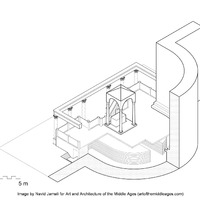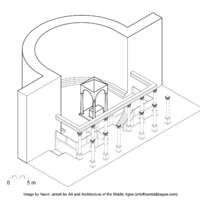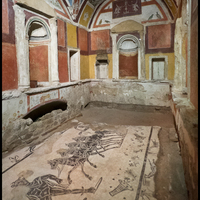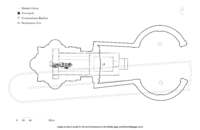Church of St. Peter, Rome
Type:
Cemeteries,
Churches,
Columns,
Grave markers,
Tombs
Date:
330s (Constantinian basilica),
600 (annular crypt built; spiral columns installed)
Description:
St. Peter is considered the founder of the institutional Christian church and also the first bishop of Rome, where he was allegedly killed for his faith in 64 CE. He was buried in a cemetery next to a racetrack (circus) on the Vatican Hill, which was the possible site of the martyrdom. In the 320s Emperor Constantine (r. 306–37) ordered the construction of a large T-shaped basilica on top of the aedicula marking Peter's grave; the aedicula was highlighted by a baldachin supported by marble spiral columns. Around 600, Pope Gregory I (r. 590–604) created the annular crypt and moved the spiral columns to the front of the apse. Two centuries later, six more spiral columns were donated by the last Byzantine ruler of Ravenna; they were added to the earlier ones to form a double screen.
The Church of St. Peter was rebuilt at a much larger scale beginning in the early sixteenth century. The relics of Peter lie at the center of the church today, directly under the dome. The twelve spiral columns were reused elsewhere in the new church. They inspired the huge gilded bronze baldachin over the altar made by Bernini in the seventeenth century, and several are visible high up on the piers that support the dome.
The Church of St. Peter was rebuilt at a much larger scale beginning in the early sixteenth century. The relics of Peter lie at the center of the church today, directly under the dome. The twelve spiral columns were reused elsewhere in the new church. They inspired the huge gilded bronze baldachin over the altar made by Bernini in the seventeenth century, and several are visible high up on the piers that support the dome.
Relevant Textbook Chapter(s):
2,
3
Repository and Online Resources:
• See the spiral column now in the Treasury of St. Peter's here.
Image Credits:
Navid Jamali; Wikimedia Commons








